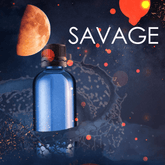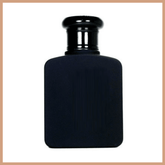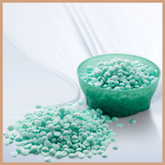The Easiest Way to Make 2 Colour Layered Wax Melts!
Have you ever wanted to make layered wax melts using two colours? This step-by-step tutorial is aimed at showing you the process of creating a two colour layered effect in your wax melts, whether you’re using clamshells or moulds.

We’ve covered marbled wax melts previously, but if you’re making seasonal wax melts or everyday wax melts, adding multiple colours to your products really makes them stand out.
If you’d like to jump straight in, our video walks you through the steps. Remember to read on for a more detailed written tutorial with images too.
Something to keep in mind: This tutorial is totally customisable so you can work with your usual wax, fragrance oils and colour dyes as opposed to the ones we’ve used!
Brand new to making wax melts? Our beginner’s tutorial on making wax melts will guide you through the process of making single colour wax melts. We recommend mastering the making of simple wax melts first before attempting a layered effect.

For our tutorial, we’re using Lemon & Lavender fragrance oil so will be doing a base layer of purple for lavender and a top layer of yellow for lemon.
Why not consider tying in your colour combination with your fragrance for maximum appeal? For instance, our Rhubarb and Wild Mint Fragrance Oil would pair beautifully with green and pink dyed melts. Our Daisy Chain Fragrance Oil could combine plain wax with yellow.
Looking ahead to seasonal offerings? Why not create deep orange and sunset yellow wax melts for Pumpkin Spice or scarlet red and plain wax layered colours for Candy Cane? The colour possibilities really are endless so have fun getting creative!
Difficult Level: Beginner to Intermediate
Makes: 3 x 5-cavity Snap Bar Wax Melts (approx 50g per clamshell)
Ingredients and Materials

- 150g Kerawax 4600 Paraffin Blend Pillar Wax
- 12g Lemon & Lavender Fragrance Oil
- 10ml Bright Yellow Candle Liquid Dye
- 10ml Purple Candle Liquid Dye
- 3 x 5-cavity snap bar wax melt clamshells
You'll also need...
- Digital weighing scales
- 2x Stainless steel or glass pouring jugs (optional)
- Milk or digital thermometer
- Metal spoon
- Melting pot
- Pan
- Kitchen roll to protect your work surface
- Nitrile gloves (or similar protective gloves) and an apron. We’d also highly recommend the use of a chemical mask
Pro tip: Before starting, make sure your work surface is covered and you’re wearing the correct PPE as stated in the materials needed above. This is to avoid skin/respiratory irritation from the fragrance oil and to protect your clothes from any splashes.
Making Layer 1 - Purple
Step 1 – Weighing out the wax

Place the melting pot on your scales and turn on. Make sure the scales are set to weigh in grams. Weigh out 100g of wax.
Step 2 – Melting the wax

Half fill your pan with cold water and place on your cooker/stove top. Sit the melting pot on top of the pan. Turn the hob/ring on and set to a medium - low heat. This is called the double-boiling method.
Pro tip: The water in your pan should be no more than halfway up your melting pots bowl.

When the wax starts to melt, place the thermometer in the wax to check the temperature. Once the wax has fully melted and reaches 85 degrees Celsius, take the pan off the heat and turn the hob off.
Pro tip: Don’t leave your thermometer in the melting pot whilst the wax is melting as it will get hot from the steam. Keep adding the thermometer to the wax at melting intervals to check it's not getting too hot.
Step 3 – Adding liquid dye

Transfer the molten wax to one of the pouring jugs if you’re using them and add colour straight away. If opting to use your melting pot, place this on a heat proof surface and add the colour. We used 5 drops of purple liquid dye.

Stir the wax thoroughly to completely dissolve and mix the dye.
Pro tip: We’d recommend shaking the bottle of liquid dye for 30 seconds prior to adding it to the wax to ensure its mixed thoroughly.
Step 4 – Adding fragrance oil

Allow the wax to reach 75 – 78 degrees Celsius then place the jug/melting pot on your scales and turn on. Add 8g of Lemon & Lavender fragrance oil.
Stir continuously for around 90 seconds to ensure the fragrance oil is thoroughly mixed into the wax.
Step 5 – Pouring the wax into your clamshells

Once stirred, allow the wax to reach 65 – 68 degrees Celsius. Once the wax has reached this temperature you can start to fill your clamshells, being careful to not overfill them. You’ll need to put around the same amount of wax in each one which should fill around ¾ of each clamshell.
Pro tip: We recommend pouring a small amount of wax into your clamshell first to check for any weak spots. Weak spots may show as the wax leaking out of the individual cells. If there are no leaks, you can proceed to fill them up.

Allow the wax to set enough before moving onto the second layer – usually around 30 minutes - 1 hour.
Step 6 - Clean Your Melting Pot (Optional)

If you used your melting pot, place the pot on the pan of water and as the heat from the water melts the remaining wax inside, give it a wipe out with some kitchen roll ready for continuing with the second layer.
Making Layer 2 - Yellow
Step 7 – Weighing out the wax

Place the melting pot on your scales and turn on. Make sure the scales are set to weigh in grams. Weigh out 50g of wax.
Step 8 – Melting the wax

There should be enough water in your pan to melt the remaining wax. Sit the melting pot on top of the pan. Turn the hob/ring on and set to a medium - low heat.
When the wax starts to melt, place the thermometer in the wax to check the temperature. Once the wax has fully melted and reaches 85 degrees Celsius, take the pan off the heat and turn the hob off.
Step 9 – Adding liquid dye

Transfer the molten wax to the second pouring jug (or keep it in your melting pot like you did with the first layer) and add colour straight away.

Stir the wax thoroughly to completely dissolve and mix the dye. We used 2 drops of bright yellow liquid dye.
Step 10 – Adding fragrance oil

Allow the wax temperature to drop to 75-78 degrees Celsius. Place the jug/melting pot on your scales and turn on. Add 4g of Lemon & Lavender fragrance oil.
Stir continuously for around 90 seconds to ensure the fragrance oil is thoroughly mixed into the wax.
Step 11 – Pouring the wax into your clamshells

Once stirred, allow the wax to reach 65 – 68 degrees Celsius. Once the wax has reached this temperature you can start to fill the remainder of your clamshells, being careful to not overfill them.
You’ll need to put around the same amount of wax in each one which should take them to the fill level of the clamshell. If you have a little wax left over, this is fine. It’s better to have too much than not enough.

Allow the wax to set fully before closing – usually around 2 hours. Your wax melts are now made and will be ready to use in 48 hours.
Handy Information: You may find that the wax we’ve used in this tutorial is prone to a little bit of wrinkling/lumpy tops. This is perfectly normal as usually this wax requires a 2nd pour to achieve a smoother surface. Rest assured this won’t affect the performance of your wax melts in any way.
Liquid Dye or Dye Chips. Which is Best to Use?

Dye chips or liquid dye will work when layering colours. Dye chips may take a little longer to dissolve in the wax as you need to add the chips hot enough so that all the pigments blend.
With this in mind, you may opt to use liquid dye instead. These are simple and easy to use, just shake the bottle and add the desired drops to your molten wax.
Experimenting is advisable so you know how much liquid dye to put in your wax to achieve the desired colour shade.
We hope you enjoyed this tutorial and learned how simple it can be to create two colour layered wax melts.
Why not have a look at all our liquid dyes, fragrance oils and wax melt waxes to decide which you’d like to use for your next attempt at layered wax melts? Have fun trying out different colour combinations!








3 Comments
Hi Sophie, If you’re selling the products, then there may be a risk of cross-contamination which would be against the GMP (Good Manufacturing Process) so I would suggest keeping any cosmetic-making equipment separate from any other product equipment. If you’re just making the soaps for your own use, then it’s probably fine, you just want to make sure there is no residual wax left and it’s washed really thoroughly. Hope that helps! Kimberly – Craftovator
I have pans I use for making soap , so is it Ok to use these for wax melts too? And then later on re-use for soap?thanks, Soph
A pleasure to read! Please don’t stop and change our curiosity and skills!
Leave a comment
All blog comments are checked prior to publishing